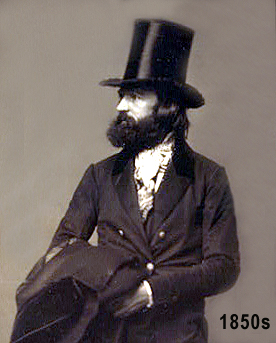

Later, he meets a Canadian carpenter named Mr. Northup's first attempt to write a letter home is thwarted when the white field-laborer in whom he confides exposes the plan to Edwin Epps. Whether his subject is the Southern landscape or the Southerners themselves, Northup frequently writes with the bemused curiosity of an intellectual tourist. He also repeatedly notes the abilities of female slaves in a manner that suggests a sort of proto-feminist sensibility. Northup seems to find the talk and behavior of Southerners equally interesting he frequently quotes and explains colloquialisms, such as the verbs "allowed" (p. 169 ) Twelve Years a Slave occasionally ventures into nature writing and ethnography, as Northup describes southern flora, fauna, and culture from the perspective of a northern traveler. For example, in describing the meager rations allotted for each week's subsistence, he quips that "no slave of is ever likely to suffer from the gout, superinduced by excessive high living" (p. Though his account reveals the misery and despair of field slaves, like many other slave narratives, it also reflects the wry humor with which Northup endured his situation. The second half of Northup's narrative is chiefly devoted to describing life on a cotton and sugar plantation. He makes his way back to Ford's plantation, where he is protected from harm. Northup escapes by running and swimming through the "Great Pacoudrie Swamp," evading water moccasins and alligators (p. Later, when he attacks Northup with a hatchet, the slave again bests the master, and this time he flees from the plantation, chased by hounds. When Tibeats attempts to whip Northup for a dubious offense, Northup fights back, and with his foot on the master's neck, he whips Tibeats "until my right arm ached" (p. Realizing that Ford ships his lumber by land at great expense, Northup devises a set of rafts to deliver them by canal, greatly increasing Ford's profits.ĭespite (or perhaps because of) his value as a laborer and de facto engineer, Northup is sold in the winter of 1842 to John Tibeats, a "quick-tempered" carpenter to whom Ford had become indebted (p.

Northup is purchased by a Baptist preacher named William Ford, and is put to work stacking and chopping logs at Ford's lumber mill. He is delivered to Theophilus Freeman, a New Orleans slave trader who informs Northup that his new name is "Platt" (p. The slaves are handcuffed and transported together via cars and steamboats to Richmond and then to New Orleans.

While in the slave pen, he makes the acquaintance of several other slaves, including Eliza, whose sad history he relates in detail (pp.
Edwin epps free#
Burch, who brutally whips him for protesting that he is a free man. Northup is sold to the notorious Washington-based slave trader James H. The men offer Northup a drink that causes him to become "insensible," and when Northup awakens, he is "alone, in utter darkness, and in chains" (p. Promised "one dollar for each day's services" and three dollars for every show that he played, Northup travels willingly with the two con artists to New York City and then to Washington, D.C. The first two chapters of Twelve Years a Slave relate the Northup family history, Solomon's marriage to Anne, his employment as a raftsman, a farmer, and a fiddle-player, and his abduction. It is therefore not only one of the longest North American slave narratives, but also one of the best-selling. Northup's book was published in 1853, less than a year after his liberation. Twelve Years a Slave was recorded by David Wilson, a white lawyer and legislator from New York who claimed to have presented "a faithful history of Solomon Northup's life, as received it from his lips" (p. Little is known about Northup's life after the trial, but he is believed to have died in 1863.
Edwin epps trial#
After he was freed, Northup filed kidnapping charges against the men who had defrauded him, but the lengthy trial that followed was ultimately dropped because of legal technicalities, and he received no remuneration. An official state agent was sent to Louisiana to reclaim Northup. After years of bondage, he came into contact with an outspoken abolitionist from Canada, who sent letters to notify Northup's family of his whereabouts. In 1841, two men offered Northup generous wages to join a traveling musical show, but soon after he accepted, they drugged him and sold him into slavery. During the 1830s, Northup became locally renowned as an excellent fiddle-player. He married Anne Hampton and they had three children together. As a young man, Northup helped his father with farming chores and worked as a raftsman on the waterways of upstate New York. His father, Mintus, was originally enslaved to the Northup family from Rhode Island, but he was freed after the family moved to New York. Solomon Northup was born a free man in Minerva, New York, in 1808.


 0 kommentar(er)
0 kommentar(er)
